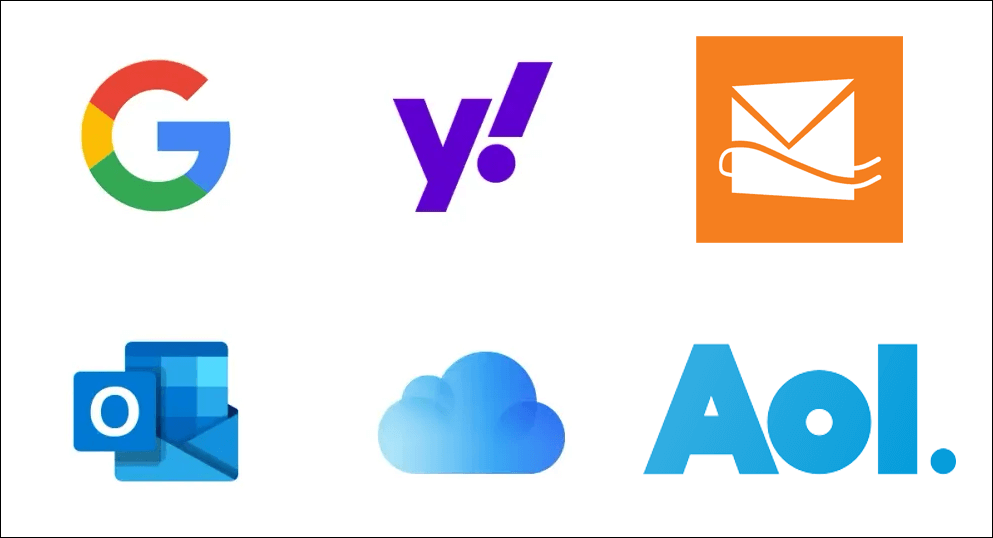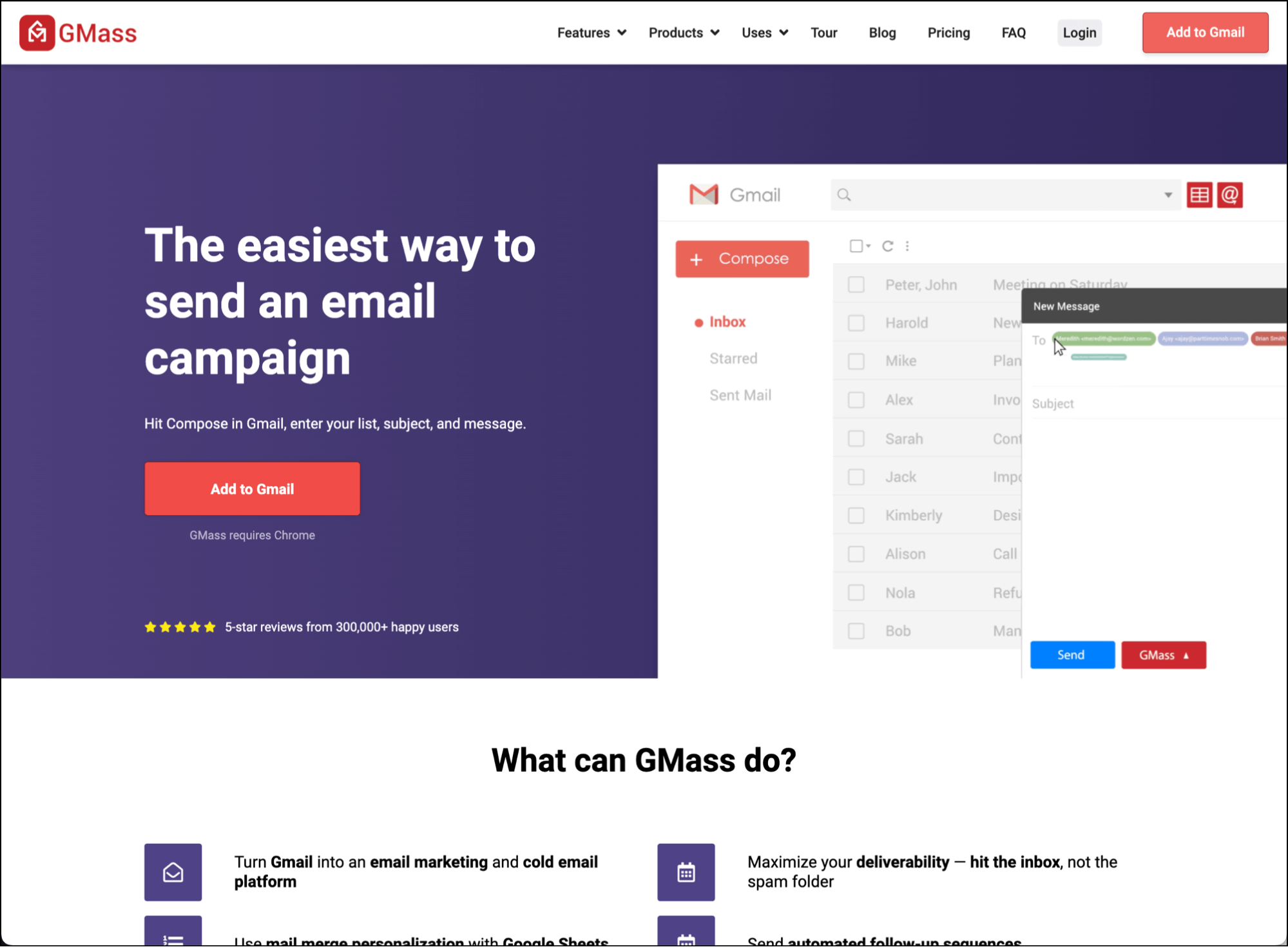
You need a professional email address.
I’m here to help.
In this article, we’ll be covering “personal” professional email addresses. That is: The email address you use for things like applying for jobs, sending professional correspondence, or running your own business.
This doesn’t include things like specialized addresses for a website (like webmaster@ or hello@), nor does it include the email address you’ll get from a company since they likely have their own naming conventions.
Now let’s pick out the email address that’s going to make you not stand out (which is a good thing).
Professional Email Address: Table of Contents
- 4 Things You Should Do When Choosing a Professional Email Address — and 5 Things to Avoid
- The 10 Best Professional Email Address Formats
- The 10 Worst Professional Email Address Formats
- Professional Email Addresses: FAQ
- Get the Most Out of Your Professional Email Address
4 Things You Should Do When Choosing a Professional Email Address — and 5 Things to Avoid
Before we dive into the email formats, let’s lay the foundation here by covering the philosophy behind those recommendations.
This foundation will also serve you well if you come up with your own idea for a professional email address and want to see if it’s a good or bad idea.
4 things you should do when choosing a professional email address
Here are the four most important things to keep in mind when you’re choosing your address.
1. Use your real name
In most cases, professional email addresses should include your name.
Using your name ensures your email is straightforward, it’s clearly tied to you, and it won’t raise any red flags.
2. Be smart with your domain

The domain (that’s the part after the “@” in your address) sends an important signal. @gmail.com suggests one thing; @aol.com suggests another.
You can also use your own domain name in many cases.
3. Keep it simple and clean
Overcomplicating your email address with unnecessary numbers, details, and words can make it harder for people to remember and can look sloppy. Stick to straightforward formats.
4. Consider your future career needs
Pick an email address that will work regardless of where your career takes you.
Avoid tying your email to a specific job or title, like [email protected], which might become irrelevant. A neutral, name-based email works long-term across industries and roles.
5 things you shouldn’t do when choosing a professional email address
Now here are five big red flags to avoid with your address.
1. Don’t use nicknames or unprofessional words
Nicknames, slang, and puns can make your email look unprofessional and childish.
2. Don’t include personal or irrelevant details
Your email isn’t the place to showcase hobbies, passions, or inside jokes. Including those things might feel personal, but they distract from your professional image.
3. Don’t use outdated providers
Domains like Hotmail or AOL can make you seem behind the times. Gmail, Outlook, or your own domain are the way to go.
4. Don’t overuse numbers
Too many numbers or symbols can make your email look cluttered and amateurish. Keep it clean and minimal.
5. Don’t make it too long or complicated
Long or overly complex email addresses are a hassle for everyone involved. Aim for brevity.
The criteria we used for our rankings
Based on the tips above and my experience both creating emails of my own and judging other people’s emails, here are the criteria I used to rank the 10 best and 10 worst options.
- Professionalism: Does the email convey a polished, work-appropriate image?
- Clarity and simplicity: Is the email easy to read, remember, and type?
- Credibility: Is the domain modern and trustworthy?
- Avoidance of red flags: Does the email avoid amateurish elements like slang and other sloppy details?
- First impression value: Does the email instill confidence in your professionalism on first glance?
The 10 Best Professional Email Address Formats
These are the 10 best professional email address options based on my criteria of professionalism, clarity, credibility, absence of red flags, and first impressions.
1. First name + last name @ gmail.com
Examples: [email protected], [email protected]
Gmail is the current gold standard in email providers, and using it with your full name keeps your address as professional, polished, and clean as it gets.
This format works well for everyone from freelancers to job seekers to business owners.
The only downside: If you didn’t grab this address at least a decade ago, someone else probably already has it. So you’ll need to look into our alternative options.
2. First initial + last name @ gmail.com
Examples: [email protected], [email protected]
This format offers a shorter alternative to the full first and last name — but this option is equally professional. It’s tight, it’s easy to type, and it avoids any unnecessary clutter.
Once again, though, if you don’t have this address already, it’s probably taken.
3. First name + middle initial + last name @ gmail.com
Examples: [email protected], [email protected]
Adding a middle initial is a good compromise if the simpler formats aren’t available. This format is slightly more difficult to read at first glance, but still looks polished.
It’s also more likely to still be available if you haven’t grabbed it already.
4. First name @ professional personal domain
Example: [email protected], [email protected]
Thus far I’ve presented gmail.com options. That’s a matter of preference over using your own personal professional domain. Your domain can be your name, or your business or service’s name.
This format is great for freelancers, entrepreneurs, or anyone building a personal brand. It communicates authority and professionalism, but managing a domain adds a layer of responsibility.
One reason I bumped this down is it gives you an extra project. If you’re going to use a domain, make sure it leads somewhere. You don’t have to make a full website but your domain should go somewhere if you’re going to use it in your email address.
5. First initial + last initial @ your name domain
Examples: [email protected], [email protected]
This is a minimalist option for personal domains.
I actually prefer it to using your first name or first and last name (e.g., I prefer [email protected] to [email protected] or [email protected]) — I think the initials move looks better and is less redundant.
Same caveat here as I gave in the prior point: Make sure your domain links somewhere.
6. First initial + last name @ personal professional domain
Examples: [email protected], [email protected]
This format strikes me as a little more formal than going with just [email protected]. It might feel too formal for you — or may feel just right.
7. First name + last name @ personal professional domain
Examples: [email protected], [email protected]
This option is a bit longer than just first name or first initial + last name with your domain — but still exudes the right amount of professionalism.
I ranked it a little lower on the list just because it can start to get lengthy. Also — it might look a tiny bit too stilted for you to have both your first and last name as part of a personal domain email address. (That’s why most people just go with their first name.)
8. First name/initial + last name + 4 numbers or less (not your birth year) @ gmail.com
Examples: [email protected], [email protected]
Adding a few numbers can help you secure your name at Gmail when simpler options are unavailable.
Make sure the numbers are random, or meaningful in a neutral way — not tied to your age or birth year, which could date you and unconsciously bias someone against you.
My favorite option is an area code.
9. First name/initial + last name + state abbreviation @ gmail.com
Examples: [email protected], [email protected]
Including a location is another good way to find a professional address that’s still available in Gmail.
The downside is this ties you to a specific region for work or networking. It’s professional but more niche and narrow, which is why I placed it lower on the list.
10. First name + last name @ outlook.com
Examples: [email protected], [email protected]
I really struggled with what to do with Outlook email addresses. Ultimately, I decided to place them below most Gmail options but still in the top 10.
Here’s why. It’s like iPhone versus Android in the U.S. (In a twist, in that situation, Google is the less cool option.)
While Android is a perfectly good product (and superior in some ways to iOS), there’s just a little more cultural cache with having the iPhone. So when someone brings their green bubbles into your text chain because of their Android, it gives you a half beat of pause and, perhaps, makes you wonder what about them compelled them to pick the more iconoclastic phone option.
I find myself in that same zone with Outlook email addresses. Outlook’s brand perception might be a touch more buttoned down than Gmail’s, but in the context of a personal email address, it’s the more offbeat choice.
And remember: Our goal with a professional email address is not to try to stand out, since standing out is usually a negative.
The 10 Worst Professional Email Address Formats
Now that I’ve covered the best professional email address formats, it’s time to cover the 10 that are the worst.
1. Nicknames or other unprofessional words
Examples: [email protected], [email protected], [email protected]
Using slang, jokes, or nicknames makes you look immature.
And beyond that — it makes you look like you’re aggressively unprofessional.
Email addresses are free. So if someone’s choosing to do their professional correspondence with such a goofy personal address — and didn’t bother to get a different address for professional situations — it makes you question their judgment on everything.
2. Emails referencing personal hobbies or interests
Examples: [email protected], [email protected]
While it’s great to have passions and hobbies, they don’t belong in your professional email address.
This format distracts from the compartmentalized image you’re trying to present and makes a shaky first impression.
3. “FirstName McBunchOfNumbers”
Examples: [email protected], [email protected]
There’s a long-running joke on the site I still call Twitter that the worst of the worst opinions come from people with the handles “FirstName McBunchOfNumbers.” It never fails.
So don’t bring that stigmatized format over to your email address. Even if someone isn’t a social media user, when they see an address like this, it screams “spam.”
4. Less-than-trendy email providers
Examples: [email protected], [email protected], [email protected]
Using an outdated domain makes you look disconnected from modern trends. And not, like, obscure or insider trends; knowing that Gmail is cooler than AOL isn’t high-level stuff.
While these providers still work, using one deep into the 2020s sends the wrong signal about how well you keep up with basic trends and norms. And no company wants to hire someone or work with someone who seems like they’re willfully behind the times.
5. Using your birth year or age-related numbers
Examples: [email protected], [email protected]
If you use something that looks like a year in your email address (either the two-digit or four-digit version), anyone who sees your email address will clock it — and immediately put you into a mental bucket because of your age.
They don’t want to have that bias, it’s instinctive and innate. And even if your year isn’t your birth year (like it’s your graduation year), the person receiving your email won’t know that.
If you’re hiring someone, you’ll have inherent biases about both [email protected] and [email protected].
Don’t put other people in that position — and don’t miss out on opportunities because quickly revealing your age sunk you.
6. Joke or pun-based addresses
Examples: [email protected], [email protected]
I love your puns. Just not in a work context.
Your clever, funny, or so-bad-its-good email address is perfect in personal settings… but it falls flat professionally. This type of email address can make you seem unserious or even annoying, leaving a bad impression.
7. Shared or family email addresses
Examples: [email protected], [email protected]
I said I love your puns… but I don’t love your codependent email addresses. I wish these would come to an end.
But even if you want to use one personally, using a shared email address for professional communication is confusing and even raises privacy concerns. It also makes you seem like you’re unprepared to handle your own correspondence.
8. Irrelevant domains
Examples: [email protected], [email protected]
In the “good” email addresses list, I talked about personal professional sites and name domains. Those are both good. But in those cases, I cautioned that the domain name should lead to a website.
That’s the problem with using an irrelevant domain — whether it’s to your personal hobby site, an old business, a friend’s website, or anything else unrelated to your professional work.
These kinds of domains will catch the eye because they stand out in a bad way — and there’s a good chance the people you’re corresponding with will check out the website.
And it may raise more questions than answers. Not in a “this is a good icebreaker” way — in a “I’m not sure I want to work with this person” way.
9. Overly informal phrases
Examples: [email protected], [email protected]
Using casual or conversational phrases in your email address feels unprofessional. It doesn’t reflect the seriousness of business communication.
It’s better to stick to formats that establish authority.
10. Overly long email addresses
Examples: [email protected], [email protected]
An excessively long email address is hard to remember, prone to typos, and unnecessarily complicated. Simplicity is key.
Professional Email Addresses: FAQ
Here are our answers to some of the most common professional email address questions.
What makes an email address “professional”?
A professional email address is clear, simple, and almost always tied to your real name. You should avoid nicknames, jokes, or unnecessary clutter. And you should use a credible domain like Gmail, Outlook, or your business domain.
Is Gmail better than Outlook for a professional email address?
Both Gmail and Outlook are excellent options for professional email addresses.
Gmail is widely recognized and often preferred for its simplicity and, perhaps, is a slight bit hipper.
Outlook is a great choice for business settings, especially if you’re already using Microsoft tools.
Can I use numbers in my professional email address?
Yes, but only when necessary and in moderation. Keep numbers minimal and unrelated to personal details like your birth year. And avoid a long string of numbers, as that’s associated with spamming.
Why should I avoid using outdated email providers like Hotmail or AOL?
Outdated email providers give the impression that you’re behind the times — and unconcerned about it. Those email providers still work, but they can signal a lack of tech-savviness to potential employers or colleagues.
What if my preferred email format is already taken?
You can try variations such as adding a middle initial, using your first initial and last name, or including a location or a few neutral numbers. Just keep it clean and professional.
Should I use my job title in my professional email address?
Usually it’s best not to. Including a job title can make your email less flexible if your role or even field changes in the future. If you stick to a neutral format you’ll be able to use your professional email address indefinitely.
Is it worth creating a personal domain for my email address?
If you’re a freelancer, entrepreneur, or building a personal brand, having a custom domain can boost the appearance of professionalism. However, it requires extra management (and setting up some sort of website or domain forwarding) so it might not be necessary or desirable for everyone.
Does my email provider matter for professional purposes?
Yes. Using a reputable provider like Gmail or Outlook ensures reliability and shows you’re current with modern standards. Lesser-known providers might raise trust issues.
Can I just use my personal email for work purposes?
It’s best to separate personal and professional email addresses. Mixing them can lead to confusion, missed opportunities, or inappropriate interactions in a business context.
Get the Most Out of Your Professional Email Address
Now that you have a professional email address — how are you going to use it most effectively?
How about turning Gmail into an email sending platform complete with everything you need — from mail merge to auto follow-ups to tracking?
GMass is an email sending platform that, yes, actually adds email marketing and mail merge superpowers right inside of Gmail/Google Workspace.

That makes it incredibly easy to incorporate GMass into your email sending flow.
Whether you want to use mail merge to personalize emails to a bunch of contacts… send newsletters… do cold or warm outreach… easily put together automated follow-ups… track opens and clicks… and a whole lot more — there’s no faster or easier way to do it than with GMass.
You can give GMass a try for free — just download the Chrome extension and you’ll get a free trial.
See why almost 400,000 people use GMass and have given an average of 4.8 out of 5 stars across 10,000+ reviews.
After all, there’s no better way to get the most out of your new professional email address than with an equally professional email platform.
Email marketing, cold email, and mail merge all in one tool — that works inside Gmail
TRY GMASS FOR FREE
Download Chrome extension - 30 second install!
No credit card required
